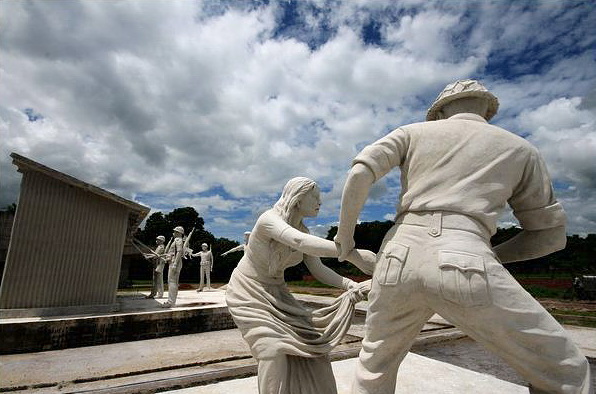
Nadia Taha, a Yezidi woman, recently spoke to the UN about her horrendous experience as a sex slave for ISIS. The so-called Islamic State has also exploited Christian, Turkmen, and Shia women. Wartime rape is an age-old weapon, seen still in conflicts in Sierra Leone, Bosnia-Herzegovina, and Rwanda. Social scientists reveal the power dynamics at play by studying both the victims and perpetrators.
Rape is an individual crime as well as a weapon of war that enforces social power. Social groups use it to help carry out genocide, instilling fear, and force displacement. Rape also alters the racial and ethnic demographics of the targeted group and intimidates groups where women are considered to be bearers and keepers of culture.
- Gabrielle Ferrales and Suzy McElrath. 2014. “Beyond Rape: Reconceptualizing Gender-based Violence during Warfare,” in Rosemary Gartner and Bill McCarthy (eds), The Oxford Handbook on Gender, Sex, and Crime. New York: Oxford University Press.
- Joshua Kaiser and John Hagan. 2015. “Gendered Genocide: The Socially Destructive Process of Genocidal Rape, Killing, and Displacement in Darfur,” Law & Society Review 49(1): 69-107.
- John Hagan, Wenona Rymond-Richmond, and Alberto Palloni. 2009. “Racial Targeting of Sexual Violence in Darfur,” American Journal of Public Health. 99(8): 1386-92.
Women and men are victims of rape during conflict. Women are targeted according to their cultural beliefs, desirability, reproductive ability, and virginity. Rape is used against men to “feminize” them, emasculating and implying homosexuality and weakness.
- Gabrielle Ferrales, Hollie Nyseth Brehm, and Suzy McElrath. Forthcoming 2016. “Gender-Based Violence Against Men and Boys in Darfur: What is Gendered About Genocide?” Gender and Society.
Perpetrators of rape during conflict include agents of the state (military, police, etc.), political groups (paramilitaries, terrorist groups, etc.), and politicized ethnic groups (e.g., Rwanda’s Hutu). As such, the International Criminal Tribunal for Rwanda decided that perpetrators of rape can be punished as individuals and states would be held responsible for either perpetrating sexual crimes or for failing to protect their citizens from such terror.
- Jennifer Green. 2015. “Uncovering Collective Rape: A Comparative Study of Political Sexual Violence,” International Journal of Sociology 34(1): 97-116.
- John Hagan and Jaimie Morse. 2014. “State Rape and The Crime of Genocide,” in Rosemary Gartner and Bill McCarthy (eds), The Oxford Handbook on Gender, Sex, and Crime. New York: Oxford University Press.

Comments